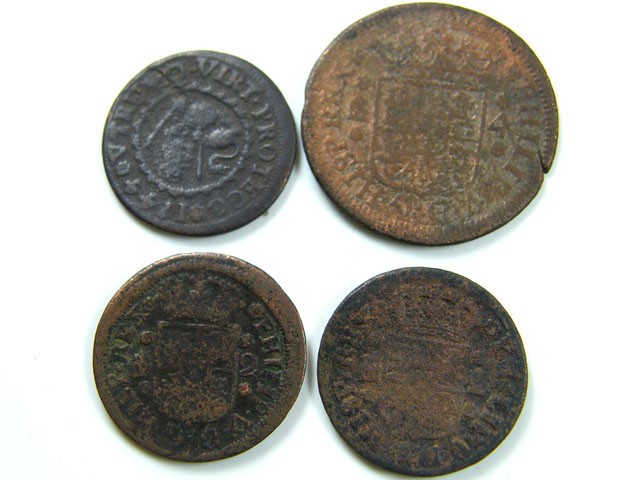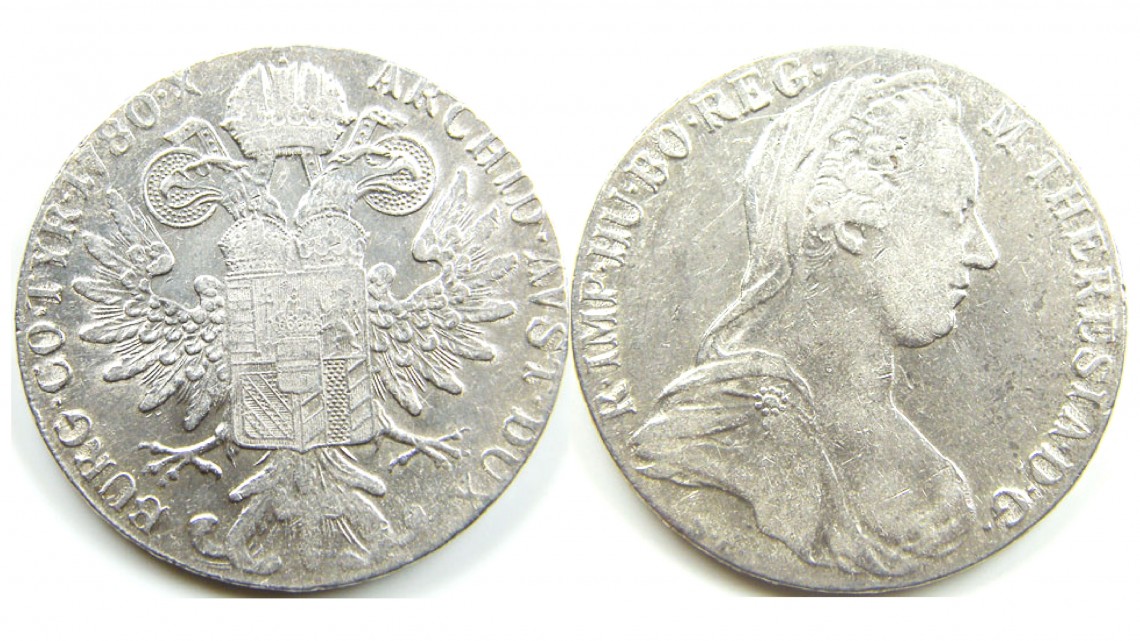
Published at 12th Apr 2018
Modified at 12th Apr 2018
WORLD COINS

World coins are basically a collection of different coin samples from around the world. Collecting these samples is both an interesting and educational hobby; however, there are a lot of higher denominational coins that can be collected as a form of investment.
How countries minted silver coins to show their power.
Ancient Romans and Greeks
The first set of coins
minted came from Lydia in Asia Minor, and this dates back to 600 BC.
In no time, the idea of coinage spread like wildfire and in no time
the Greeks adopted and modified the coinage system, and then the
whole Mediterranean region also began to trade with the Greek
coinage. In the 3rd century BC, the Romans began to mint their own
coins, and soon they began to dominate and rule the Hellenistic
monarchs, however across the Mediterranean region, there was no
unitary monetary system. The eastern regions continued using their
locally minted coins, while the western regions stuck with the
denarius. The Romans and Greeks were not the only ones that issued
coins within the Mediterranean, others include the Jews, Phoenicians,
Celts, Carthaginians and other regions in the Arab and Iberian
Peninsula.

Spanish
In 1492, after the Americas was colonized by the Spanish, some important discoveries were made in various places including Mexico (it was known as New Spain then), Peru, and especially the silver mine found in Potosi (now Bolivia). Mining sites were licensed by the Spanish crown with the agreement that the Quinto (fifth of the proceeds) would be allocated to the crown. Peru and Mexico were two places where the Spanish crown established mints, and thus the spread of uniformly minted, high-quality coins began, which led to the coins becoming an international currency. The Spanish crown began trading with Europe, and Asia, and the Chinese grew interested in the silver coins, and they traded silks, Chinese porcelain, and other luxury goods in exchange for high quality silver Spanish coins.

American Silver Eagle
This is the United State’s official silver bullion coin, and was released in San Francisco in 1986. It only comes in one size, and that is one troy ounce, and has a face value of $1. There is a guarantee that the coin is made of 99.9% pure silver. There are no mintmarks on the Bullion Silver Eagle, and the bullions were produced from 1986 to 1998 at the San Francisco Mint, then the minting was moved to the Philadelphia Mint from 1999 to 2000. Between 1986 and 1992, San Francisco was responsible for the minting of proof Silver Eagles coins, and the coins bore an “S” mark, and between 1993 to 2000, they had the “P” mark because they were Philadelphia was responsible for their minting. West Pont took control of minting between 2001 and 2008 and bore the “W” mark. The American Silver Eagle is 40.6 mm in diameter, has a thickness of 2.98 mm, and has a reeded edge. On the obverse side is the Walking Liberty which is the work of Adolph A. Weinman, and on the reverse side is the Heraldic eagle with a shield, arrows, and thirteen stars designed by John Mercanti.

Peace dollar 1922 and 1923
This was minted from 1921 to 1928, then from 1934 to 1935. This United States dollar coin was designed by Anthony de Francisci. In January 1922, the Peace dollar began circulation. The San Francisco Mint produced 17,475,000 pieces of the coin, however, there is no much information about the uncirculated condition of the coin, as a greater percentage of the original minted coins was circulated. The coin was designed by Anthony de Francisci, the coin spots the image of Lady Liberty in her young self, with a crown of rays. The name “peace coin/dollar” was given to the coin by Farran Zerbe and some others, and that was at the end of the “great war”.

Canadian Maple Leaf Coin
This is one of the
hotly sought coins in the world; mining of the coin began in 1979 by
the Royal Canadian Mint. The Royal Canadian takes great care to mint
high-quality coins while taking metal purity and design into
consideration. The two popular most Canadian Maple Leaf coins created
are the Silver Maple Leaf and the Canadian Gold Maple Leaf coin, and
both coins are made in the purest forms. There are different weight
versions of the coin, the minimum is one troy ounce, and the others:
1 gram, 1/25 oz, 1/20 oz, 1/10 oz, ¼ oz, and ½ oz. On the obverse
side is the image of Queen II of Canada, and on the reverse side is
the Canadian Maple Leaf. The coin’s edge is serrated and has a
diameter of 30.00 mm. It also has a face value of 50.00 Canadian
Dollar.

Britannia Coin
The Royal Mint issues
these British bullion coins. Minting first started with only gold
coins in 1987, before silver in 1997. 1 troy ounce of Britannia gold
has a £100 face value; there are also fractional sizes of the gold
coins available too. Britannia silver coins, on the other hand,
contain one troy ounce of silver with a face value worth £2. They
have only fraction of the sizes of the gold coins. On the obverse
side is the profile of Queen Elizabeth II and was designed by Jody
Clark, and on the reverse side is the Britannia that was designed by
Philip Nathan.

South African – Krugerrand
This South African gold
coin began minting in 1967 and helped boost the South African gold
market. 1 Krugerrand is equivalent to 1 troy ounce of fine gold. On
the obverse side is the profile of Paul Kruger designed by Otto
Schultz, and on the reverse is a springbok antelope designed by Coert
Steynberg.

Australian Perth Mint
This is Australia’s
Government-owned bullion mint, and it was established in 1899. The
mint is known to produce the finest of bullion products, including
the Australian Silver Lunar Coins and Australian Gold Lunar Coins.

Austrian Thaler
The Maria Theresa
thaler (MTT) was minted in 1741 and is a silver bullion coin. It
derived its name from an Empress that ruled Bohemia, Austria, and
Hungary between 1740 and 1780. Her name was Maria Theresa. The coin
has a diameter of 39.5-41 mm and is 2.5 mm thick. Its silver content
is .833 silver and copper content of .166.

WORLD COINS
Many collectors obtain great satisfaction form buying coins from a particular country, especially if it is a country that you do not live in. You can collect coins that are similar from animals to plants to wildlife or ancient shipwreck coins or even to collect coins from countries that no longer exist now like Belgian Congo, Portuguese guinea, Saarland, Tibet, Malacca. It is so interesting to collect coins that show us history of the country or empire Consider collecting coins or specialize in one or more of these areas of specialty Its incredible how many fields you can specialize in and enjoy.
Ancient coins or medieval coins, Roman, Greek, Islamic, British empire coins, Dutch indies coins, French territorial coins Olympic coins from all over the world Sports coins form around the world Collect Tokens Ancient Asian empires Ancient Indian empires Bi metallic coins Low mintage coins Coins with animals from around the world Coins with gemstones series African coins Paper money Vatican coins Pacific island coins Historic old coins Middle eastern coins. Chinese coins Australian pre decimal coins Coin ste Proof sets Uncirculated coins Nazi coins Coin books
There is so much history to learn when studying coins. Did you know around the seventh centaury BC Lydia now Turkey made lump of gold and silver called electrum which were stamped with a single punch.

At about the same time coins were made in the Indus valley now know as Pakistan consisting of a silver bar punched similar to hallmark And also china used coins for bartering in this same period, they made bronze coins tat were used for centuries..
So start a collection that appeals to you ,you can buy a series complete, that is coins made as one series and have the entire collection or buy bits and pieces and add to your collection. Many collectors do not see their collections as an investment, but for enjoyment only So it depends on your level of involvement and to what you collect as to if there is demand for your coins.
If you collect rare coins there has to be the possibility that they will increase in price, but it is the same age old supply and demand factors. For example a African country might make limited mintage but not many collectors will pay premium for these coins, but rare coins from a strong society are always in demand.
We suggest you always start collecting as a hobby and for enjoyment before considering it as an investment as no need to rush in if silver rises for example ,the price of silver coins will increase but these investors sell when the price goes down so you need long term strategy in buying coins It is also obvious you need product knowledge before you spend a lot of money So do you home work and understand the coins in the period that interests you.
A big advantage on coins auctioned is that sellers have to be verified before they can sell and have to be a member of a trade or coin organisation.
Search the Coin Encyclopedia
Related Auctions
Related Articles
Why Do People Collect Coins? Collectors buy and collect coins for personnel pleasure and enjoyment or for an enjoyable investment. In late 1980s to early 1990s coin collecting was not so popular but now there is a re insurgence in collecting coins.
10th Jun 2009
Silver has been used in coins for centuries. The ancient Romans made silver coins for the Roman Empire but only Rome was allowed to make silver coins and all the countries that were made part of the roman Empire could only produce bronze, not silver coins
24th Apr 2018
From time to time you will come across an ancient coin with a hole on it. Coins that were holed in ancient times are intriguing. Why was this so?
12th Mar 2018
Latest Articles
Washington quarters are 25-cent US coins issued since 1932. The original obverse remains, with dozens of varieties and new reverses. Learn the history, types, key dates, and errors on the iconic coin!
4th Nov 2024
Walking liberty half dollars are 50-cent American coins circulated from 1916 to 1947. The iconic design has been featured on the silver eagle bullion since 1986 and remains sought-after by collectors.
7th Oct 2024
Standing liberty quarters were circulated US coins issued from 1916 to 1930 as part of the Renaissance of American Coinage. Learn the values, varieties, and stories of standing liberty quarters!
9th Sep 2024
Article Categories
Collection of articles providing lots of useful information on coins through the ages.
30 Articles








